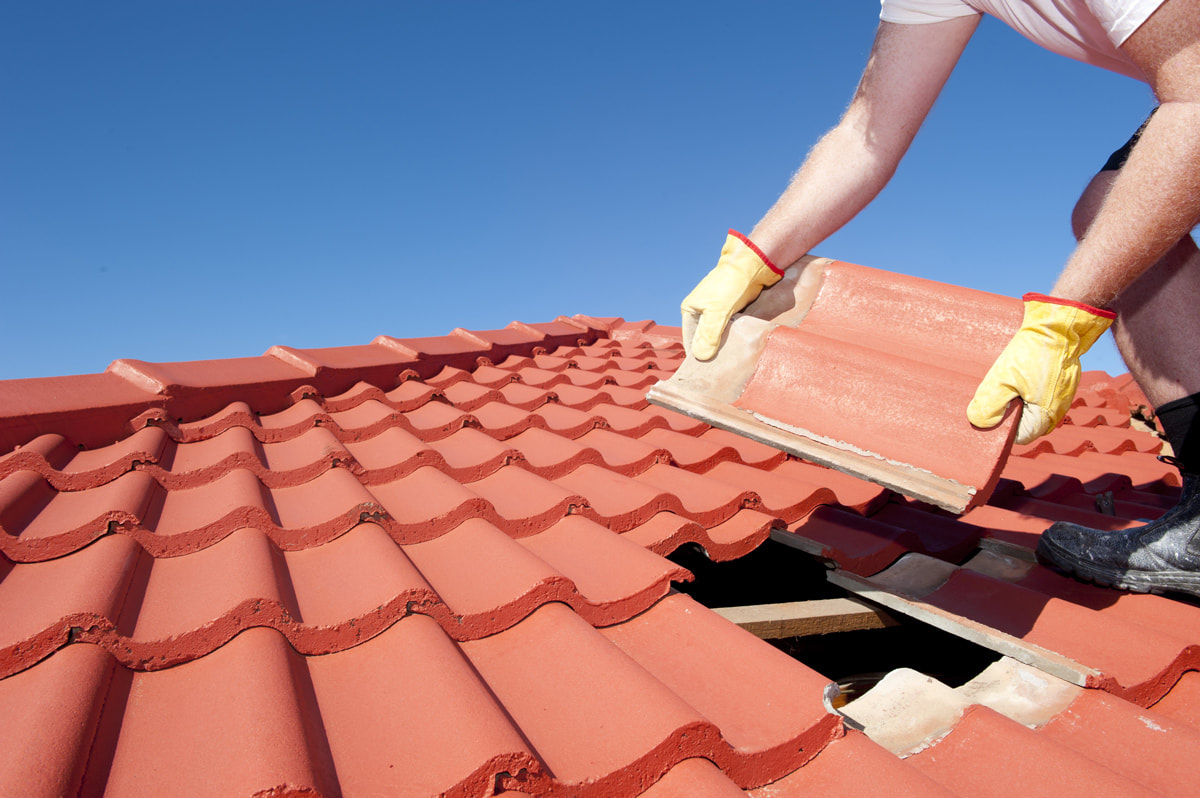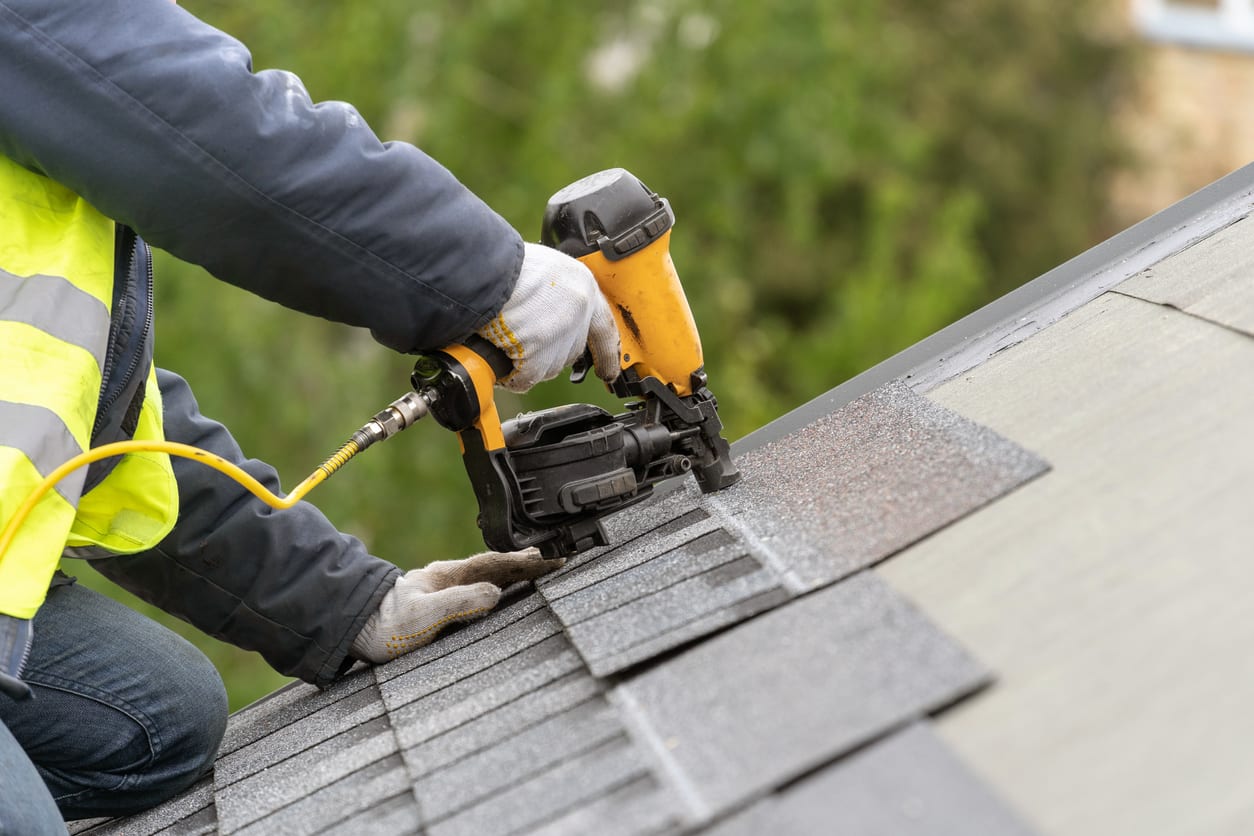Preventative Roofing Maintenance: Tips to Prevent Expensive Fixings
To avoid pricey repairs, you need to examine your roof on a regular basis for missing or damaged shingles, tidy your gutters and downspouts to stop obstructions, and trim overhanging branches. Do not forget to inspect for indications of leakages and ensure appropriate air flow in your attic. Scheduling professional assessments at least when a year can assist catch surprise problems early. These straightforward actions can greatly expand your roof's life-span, and there's lots more you can do to safeguard your financial investment.
Evaluate Your Roof Regularly
When you evaluate your roofing consistently, you can capture prospective problems before they become pricey fixings. Beginning by inspecting for missing, cracked, or curling tiles; these are indications that your roof covering might need interest.
After a tornado, it's important to evaluate your roofing system for damage caused by high winds or hefty particles. Don't fail to remember to evaluate the underside of your roof covering in the attic; look for indications of moisture or mold and mildew, which can show leaks.
Clean Rain Gutters and Downspouts
Regular roofing assessments naturally bring about a crucial job: cleansing your gutters and downspouts. Blocked rain gutters can create water to back up, bring about potential roofing leaks and architectural damages. To stop these concerns, make it a practice to inspect your rain gutters at the very least twice a year, specifically after hefty storms or drop when leaves collect.
Don't neglect to check downspouts for clogs. If water isn't streaming freely, you may require to use a plumbing professional's serpent or a hose pipe to clear the blockage.
Address Overhanging Branches
Looming branches can posture a major risk to your roof covering, so it is essential to cut them on a regular basis. Not only can they trigger damages throughout storms, but they can also invite pests. Make it a practice to check for any indicators of wear or damage to keep your roofing in leading shape.
Trim Routinely
One of one of the most essential action in roofing upkeep is to cut those branches that hang as well near to your home. Looming branches can create severe issues, from particles build-up to prospective damage throughout storms. Consistently cutting down these branches keeps your roof covering clear and minimizes the danger of leakages and parasites. Ensure to examine the wellness of the trees around your home; weak or dead branches position an also higher threat. Purpose to trim branches at the very least six feet away from your roofline, assuring they won't enter into contact with your roof shingles. You don't require to tackle this task alone; working with a specialist arborist can ensure effective and risk-free cutting, protecting your roof and enhancing your home's general appearance.
Check for Damage
 roof repair
roof repair
Check for Damaged or Missing Roof Shingles
It's necessary to check your tiles regularly for any damages or missing out on items. Change missing shingles immediately to avoid more problems if you detect any issues. Keep an eye on just how the weather affects your roof covering, as rough problems can lead to use and tear.
Inspect Frequently for Damages
On a regular basis checking your roofing for damage is important to keeping its integrity and extending its life expectancy. Evaluate your roofing after heavy tornados or strong winds, as these conditions can displace or damage shingles. By making roof assessments a normal part of your maintenance routine, you can capture troubles early and save yourself from expensive fixings down the line.
Replace Missing Out On Shingles Without Delay
After examining for any type of damage during your inspections, you may find that some tiles are missing or compromised. Don't wait to change them; prompt action can prevent additional problems. Missing tiles expose your roof to moisture, which can lead to leakages and even more extensive damage in time.
When you notice a missing out on tile, examine the bordering tiles for any type of that are split or curling, as these might need changing also. Ensure to make use of roof shingles that match your roofing system's shade and style for a smooth appearance. Don't be reluctant to call a specialist if you're unsure about doing it on your own. Keeping your roofing system in top shape is crucial for protecting your home and avoiding expensive repairs down the line.
Monitor Weather Effect Frequently
As storms roll through your location, keeping a close eye on your roof covering becomes crucial. After each storm, take a moment to evaluate your roof for any harmed or missing shingles. Climbing up onto the roofing isn't constantly required; you can usually identify troubles from the ground with binoculars.
 roof repair
roof repairMake Certain Proper Air Flow
While many homeowners concentrate on the exterior and architectural elements of their roofings, assuring correct air flow is crucial for preserving its longevity and performance. Poor air flow can cause heat accumulation and wetness build-up, which can trigger damage in time. Ensure your attic has sufficient airflow by installing soffit vents and ridge vents. This setup permits a continual flow of fresh air, helping to manage temperature and reduce humidity degrees.
Check your vents regularly to ensure they're not obstructed by insulation or debris. It could show insufficient air flow if you see any type of signs of mold or mildew. In addition, take into consideration utilizing a powered ventilator if your home battles with air movement. Appropriate air flow not only enhances your roofing's lifespan yet also enhances power efficiency, maintaining your home comfy year-round. By taking these actions, you're spending in your roof's health and staying clear of expensive repair work down the line.
Look for Signs of Leaks
Appropriate ventilation aids protect against dampness build-up, however despite having great airflow, it's essential to watch out for indicators of leakages. Start by examining your ceilings and wall surfaces for water stains or discoloration, which can indicate a leak above. Do not neglect to check your attic room for moist areas, mold and mildew, or mold, as these can be very early warning indications. Search for peeling off paint or bubbling info page wallpaper, also; these commonly signal moisture intrusion.
Outside, analyze your roof for missing shingles, cracks, or harmed flashing, as these susceptabilities can lead to leakages. Take notice of locations around skylights, vents, and chimneys, where leakages typically occur. Act promptly to address them prior to they get worse if you observe any type of indications. Remember, catching leakages early can conserve you from pricey repairs down the roadway. On a regular basis looking for these indications will certainly aid keep your roofing's stability and keep your home secure and dry.
Set Up Specialist Examinations
 roof repair
roof repair
Go for at the very least one evaluation each year, ideally in the springtime or autumn, to straighten with seasonal modifications. Throughout these assessments, specialists can determine potential dangers like missing shingles, deteriorated flashing, or indications of mold and mildew. They'll likewise look for particles buildup that could bring about water merging.
Do not wait for visible indications of trouble; taking proactive actions can prolong your roofing system's life expectancy. Purchasing regular inspections not just secures your home however also provides you assurance knowing your roof remains in excellent condition.
Frequently Asked Concerns
Exactly how Often Should I Carry Out Roof Covering Inspections?
You should execute roofing system examinations at least twice a year, ideally in springtime and loss. Routine checks assist you spot potential concerns early, saving you time and money on expensive repairs down the line.
What Tools Do I Need for Roofing Maintenance?
For roofing system maintenance, you'll need a sturdy ladder, safety and security harness, roof covering nails, a hammer, an energy blade, caulk, a trowel, and a flashlight. Don't neglect handwear covers and safety and security goggles to maintain yourself protected!
Can I Clean My Roofing Myself?
Yes, you can cleanse your roofing system on your own. Simply make sure you have the right tools, wear security gear, and comply with correct strategies. It is very important to be careful to avoid crashes and assure effective cleaning.
How Can I Recognize Roof Leakages Early?
To determine roofing system leakages early, you'll desire to inspect your roofing system routinely. Try to find water spots, mold and mildew, or missing roof shingles. Listen after heavy rainfall, and do not hesitate to check the attic room for wet areas.
What Are the Indicators I Need a New Roof Covering?
If you notice curled or missing roof shingles, persistent leakages, or water spots on ceilings,You'll require a brand-new roof covering. Furthermore, if your roofing's age surpasses twenty years, it's a good idea to ponder substitute quicker as opposed to later on.
To avoid expensive repair services, you ought to inspect your roofing regularly for missing or harmed shingles, tidy your downspouts and seamless gutters to protect against blockages, and trim looming branches. Missing out on shingles subject your roof covering to dampness, which can lead to leakages and even more considerable damage over time.
After each tornado, take a minute to evaluate your roof for any type of harmed or missing out on shingles.Outside, examine your roof for missing shingles, splits, or damaged blinking, as these susceptabilities can lead to leakages.To recognize roofing leakages early, you'll want to check your roofing system consistently.